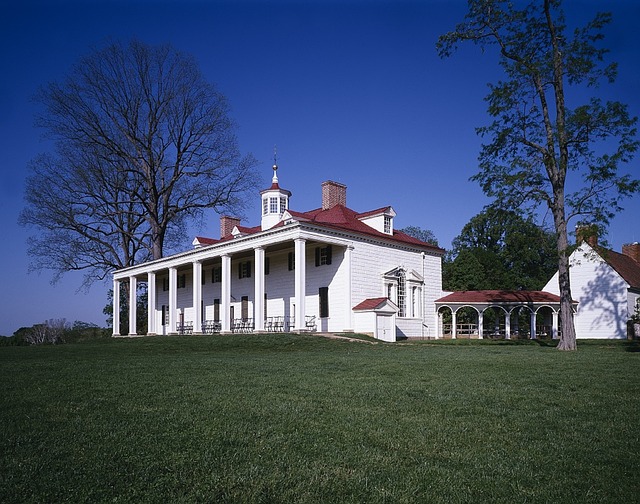We are not crooks. HAROO. Today Growers Network discusses how Cannabis has influenced politics in the US.

When Growers Network first started this series on how Cannabis has influenced culture, it all seemed simple. We’d hit some of the major touchpoints of culture, call it a day.
Then we did our research. Hoo boy!
Author’s Note: Earlier periods of time have fewer records and will tend to have more legends and myths associated with them. In this article I will attempt to cite my sources, but hearsay can be tricky to determine.
17th Century and Earlier
We’ll start in colonial times, prior to the Revolutionary War. Cannabis was first introduced to the Americas in 1606 (source) and it was considered an important agricultural crop. In 1619 the Virginia Assembly even went so far as to mandate that every farmer would be required to grow hemp (source).
The early introduction of hemp to the North American colonies shouldn’t be surprising because both Queen Elizabeth and King Henry VIII mandated that farmers should grow hemp in England (source) only 50 years prior. Since England, was a seafaring nation, it should come as no surprise that hemp fiber was highly valued for its high tensile strength, making it an ideal material for sails and ropes. In fact, the word “canvas” is derived from the word “Cannabis” (source).
18th Century
Throughout the 1700s, because of its value as a fiber, several colonies mandated that all farmers grow hemp (source). George Washington, Thomas Jefferson, and John Adams would later advocate for hemp production on farms. Recently this has come full circle, because Mount Vernon is growing hemp again.

I want to address the giant pink green elephant in the room. There are many stories about how Thomas Jefferson or George Washington used to smoke Cannabis flowers, but is there any truth to this? The Monticello did an in-depth analysis of contemporaneous documents and found no evidence for such behavior. This correlates with our understanding of hemp at the time -- most Cannabis in the New World had very low THC levels, making smoking it unpleasant.
While people weren’t smoking Cannabis, it was being used for more than just fiber. Estimates from the time period suggest that 75-90% of all paper was hemp-derived. The first drafts of the Declaration of Independence would be written on hemp-derived paper, with the final version being printed on more-expensive parchment (source). There is also some evidence that early drafts of the US Constitution were written on hemp-derived paper, with the final draft being written on parchment (source). This makes sense, given that in the time period these two documents were written, hemp paper was more common and cheaper, while parchment was more expensive and more durable.
During this time period, there are also some early references to the intoxicating effects of Cannabis, and some suggestions that high-class gangs in London used Cannabis to get high (source). However, it wouldn’t be until the 19th century that the intoxicating effects of Cannabis would start to get noticed by most of Western society and the USA.
19th Century
The period between the Revolutionary War and the War of 1812 was mostly marked by peace and growth. The Native Americans weren’t so fortunate, and conflicts with Native American tribes began to emerge prior to the War of 1812. When the War of 1812 came around, Cannabis’ significance emerged yet again.

Warships were needed during the War of 1812 in order to fight the British, and with the need for warships came the need for hemp fiber. The USS Constitution was constructed in 1797, but its most notable engagements were during the War of 1812. When it was built, it required nearly 122,000 pounds of hemp fiber for its construction (source). And that was just a single warship -- there were a handful of others in the US’ employ during that same time period.
As the 19th century rolled on, the use of hemp for fiber products began to wane. Alternative fiber crops such as jute and cotton became more common and easier to process and produce (source). Towards the end of the 19th century, many sailing ships stopped relying upon fiber-intensive wind sails and began to rely upon iron and steel engines. However, hemp and Cannabis began to find other uses. Hemp oil and hemp derivatives began to appear in the mid-19th century and found regular shelf space in apothecaries and pharmacies towards the end of the 19th century (source).
Another myth about one of the US presidents emerges during this time -- one in which Abraham Lincoln supposedly enjoyed smoking “sweet hemp on his porch”. However, contemporaneous evidence contains no proof of this legend (source). While it is possible Abraham Lincoln fueled some of his lamps with hemp seed oil, there is no definitive evidence.
1900-1937
The trend of using hemp derivatives as medicine continued well into the 20th century, and many pharmacies and apothecaries carried Cannabis tinctures and syrups, and many doctors prescribed Cannabis preparations to their patients (source).
Around this time, recreational use of Cannabis started to become noticeable. The word “marijuana” began to enter common parlance in the US, as Mexican immigrants who were known to smoke Cannabis flowers became more common in the Southern United States (source). Racial fears and tensions were stoked during the Great Depression, harming the public perception of Cannabis, as Mexicans and African Americans were most commonly associated with the recreational use of Cannabis. These minorities were blamed for a variety of problems, including “Reefer Madness.”
During this time period, Cannabis gained much notoriety and became the subject of numerous songs about its use. You can read about how Cannabis affected music here.
This would all come to a head with the Marihuana (sic) Tax Act of 1937, which effectively made Cannabis illegal in the United States. The act was passed despite the complaints of the American Medical Association and other physician’s organizations (source). The Marihuana Tax Act made non-medical and non-industrial uses of Cannabis illegal, completely banning recreational use of Cannabis. It also imposed significant taxes on physicians prescribing Cannabis products, and levied an annual tax on hemp farmers.
1937-1952
Despite the prohibition against recreational Cannabis, hemp was not illegal after the Marihuana Tax Act of 1937. It would persist as a valuable agricultural commodity through World War 2, and the US government would even encourage hemp farming for the war effort (source). During WWII, the US Government temporarily lifted the Marihuana Tax Act of 1937 to encourage hemp production, but would reinstate the act after the war.
Recreational Cannabis use would persist, but in secret. Musicians and artists were known to continue using recreational Cannabis, but records are spotty given its illegal status at the time.
1952-1970
1952 and 1956 were the years that would render all Cannabis, including industrial hemp and medical products, illegal in the United States. 1952 saw the introduction of Boggs Act of 1952 and 1956 saw the Narcotics Control Act of 1956. The Boggs Act set mandatory minimum sentences for drug convictions, and the Narcotics Control Act determined that all Cannabis (including hemp) was an illegal drug.
Because of these laws, all Cannabis growth went underground (figuratively, not literally). Luckily, this time period coincided with the start of hydroponics and commercially viable artificial grow lighting. While outdoor guerrilla grows would continue due to their economic efficiency, the conditions were ripe for indoor Cannabis growing to be born.
1970-1974 - Richard Nixon and the CSA
Now… we arrive at Richard Nixon. Up to this point, there were politicians who used Cannabis prohibition to further their own ends, but none quite like Richard Nixon. Richard Nixon oversaw the implementation of the Controlled Substances Act which scheduled Cannabis (and all cannabinoids) as a schedule 1 narcotic. Nixon also started what is colloquially called the “War on Drugs” and reportedly used it to target minorities and groups who were likely to favor the Democrats.
Needless to say, this strong anti-drug fervor led to the creation of all sorts of anti-drug slogans, advertisements, Public Service Announcements, and more. Cannabis was dragged into the label of “narcotic” and often explicitly targeted. But this was just the beginning; Ronald Reagan would take it even further.
1981-1989 - Ronald Reagan and the War on Drugs
We briefly skip over the presidencies of Gerald Ford and Jimmy Carter largely because nothing new happened with regards to Cannabis. The policies of the Controlled Substances Act and the War on Drugs continued, guerrilla grows continued, and generally not much changed. Jimmy Carter opposed the criminalization of Cannabis, but was unable to gain any traction in his efforts (source).
Ronald Reagan, however, took anti-Cannabis to a whole new level:
The Reagan administration regularly put out content and PSAs against drugs, and particularly Cannabis. Nancy Reagan, the First Lady, started the “Just Say No” campaign which was her primary initiative as the First Lady. During this time, the AIDS epidemic in the US was really kicking off, and Cannabis was partially blamed as a gateway drug to harsher drugs that could carry HIV. Even children’s programming contained anti-Cannabis messages:
1993-2000 - Bill Clinton
We’re going to skip over George H.W. Bush’s presidency, although it is worth mentioning that under his presidency, companies that sold equipment to Cannabis producers were targeted, expanding the DEA’s power.
Now we get to the Clinton years, where we see the first signs of the ice melting. Famously, during his run for the presidency, Bill Clinton said that he smoked marijuana, but he “didn’t inhale.”
During Clinton’s presidency, California would legalize medical Cannabis with the Compassionate Care Act of 1996, the first act of its kind to attempt to decriminalize Cannabis in the US. While overall governmental policies regarding Cannabis showed few signs of movement, there was finally movement on the issue. Oregon, Alaska, Washington, and Maine would all legalize medical Cannabis during Clinton’s presidency.
2008-2016 - Barack Obama
We’re skipping over George W. Bush’s presidency, because government policies regarding Cannabis generally didn’t change. More states legalized medical Cannabis during his presidency, continuing what started under Clinton.
However, we start to see real movement on the issue under Barack Obama’s presidency. In 2012, Colorado and Washington became the first two states to legalize recreational Cannabis, and Barack Obama put the Cole Memo into effect in 2013, preventing the Justice Department from enforcing prohibition in states where Cannabis had been legalized. The Rohrabacher-Farr Amendment would come in 2014, reinforcing the provisions of the Cole Memo. Neither of these policy changes have affected the legal status of Cannabis, but remain popular.
2016-Today - Donald Trump
In 2016, Donald Trump was elected to the presidency, and appointed Jefferson Sessions III as his attorney general. While Donald Trump indicated indifference on the subject of Cannabis, AG Jeff Sessions was staunchly anti-Cannabis, saying “Good people don’t use marijuana.” He overturned the Cole Memo, but was kept at bay by the Rohrabacher-Farr Amendment. He would later be fired by Donald Trump.
In 2018, the STATES Act was introduced by Senators Cory Gardner (R-CO) and Elizabeth Warren (D-MA) and could potentially provide an avenue towards total legalization in the US. The STATES Act shows bipartisan support in the House of Representatives and Senate. Also worthy of note in 2018 was the passage of the US Farm Bill which included a provision descheduling hemp, meaning that industrial hemp is now legal throughout the US once again. The measure was spearheaded by Kentucky Senator Mitch McConnell.
And that’s where we’re at today. What will the future hold? If current trends continue, we’ll likely see the complete legalization of Cannabis at the federal level in the US during our lifetimes. Some optimists believe we will see it as early as 2020, and some of the more pessimistic expect 2024 or 2028. Regardless, the pendulum of society has shifted, and most see legalization as inevitable in the US.
So what do you think? What country should we cover next? Let us know in the survey below or on the forum.
10 Best Gift Ideas for Cannabis Connoisseurs and Growing Aficionados (2022)
December 7, 2022Developing and Optimizing a Cannabis Cultivation System
December 14, 2021Dealing with Insomnia: How Can CBD Help?
December 10, 2020Your Guide to Sleep and CBD
December 7, 2020
Do you want to receive the next Grower's Spotlight as soon as it's available? Sign up below!

Do you have any questions or comments?

About the Author
Hunter Wilson is a community builder with Growers Network. He graduated from the University of Arizona in 2011 with a Masters in Teaching and in 2007 with a Bachelors in Biology.